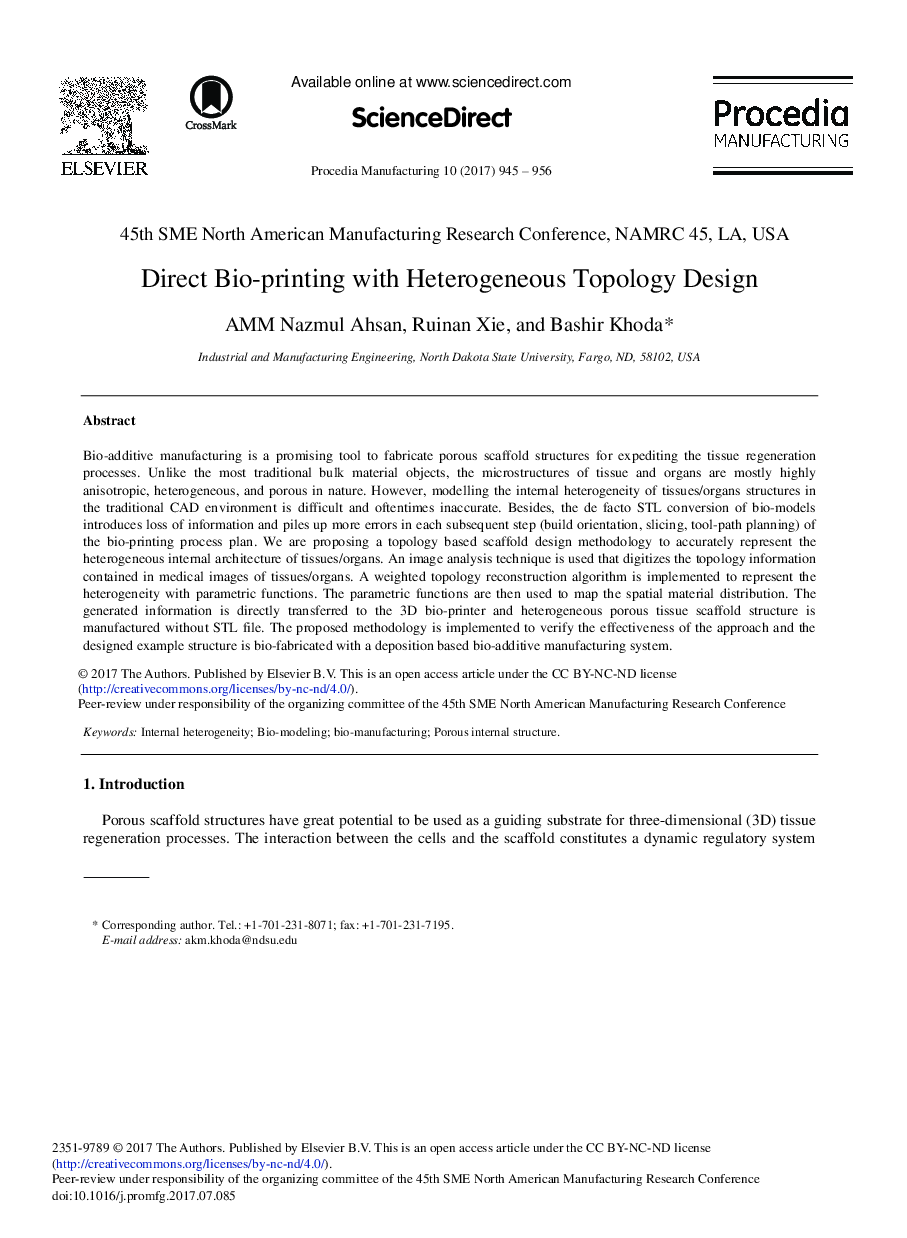| Article ID | Journal | Published Year | Pages | File Type |
|---|---|---|---|---|
| 5128837 | Procedia Manufacturing | 2017 | 12 Pages |
Bio-additive manufacturing is a promising tool to fabricate porous scaffold structures for expediting the tissue regeneration processes. Unlike the most traditional bulk material objects, the microstructures of tissue and organs are mostly highly anisotropic, heterogeneous, and porous in nature. However, modelling the internal heterogeneity of tissues/organs structures in the traditional CAD environment is difficult and oftentimes inaccurate. Besides, the de facto STL conversion of bio-models introduces loss of information and piles up more errors in each subsequent step (build orientation, slicing, tool-path planning) of the bio-printing process plan. We are proposing a topology based scaffold design methodology to accurately represent the heterogeneous internal architecture of tissues/organs. An image analysis technique is used that digitizes the topology information contained in medical images of tissues/organs. A weighted topology reconstruction algorithm is implemented to represent the heterogeneity with parametric functions. The parametric functions are then used to map the spatial material distribution. The generated information is directly transferred to the 3D bio-printer and heterogeneous porous tissue scaffold structure is manufactured without STL file. The proposed methodology is implemented to verify the effectiveness of the approach and the designed example structure is bio-fabricated with a deposition based bio-additive manufacturing system.
